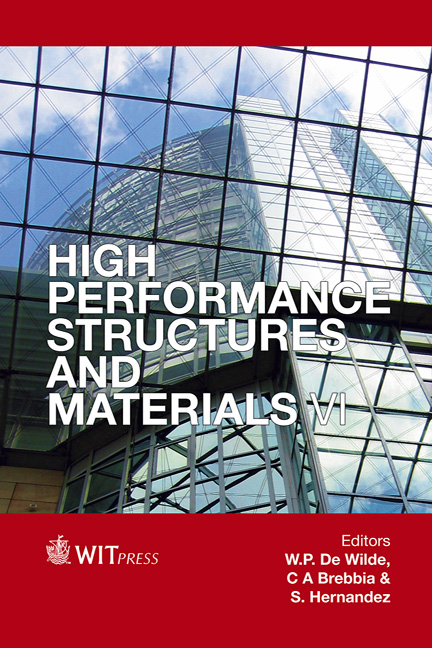Elastically Connected And Offset Members At Seville April Fair Gateways
Price
Free (open access)
Transaction
Volume
124
Pages
12
Page Range
353 - 364
Published
2012
Size
1,025 kb
Paper DOI
10.2495/HPSM120311
Copyright
WIT Press
Author(s)
M. T. Rodríguez-León & J. Sánchez
Abstract
On the occasion of the celebration of the April Fair, Seville’s city council orders a gateway to the fairground to be built every year. These large structures, 50 meters long, 40 meters high and a variable depth of around 4 to 5 meters, are space structures composed of tubular metal elements connected by clamps, and covered by ornamental wood boards. The design of the referred spatial structure is presented as modular, able to distribute efforts in an isotropic network, so that efforts are transmitted in a uniform way. This paper investigates the problems involved in the analysis of this three dimensional structure having offset members. It intends to see if there are major differences between considering or not the modelling of the eccentricities, as well as further testing the influence of the consideration of the rigidity of the clamp, modelling it as rigid, articulated or elastic. The extent to which the modification influences the position of the eccentricities is also discussed, as this aspect is difficult to control on site. Keywords: Seville April Fair gateways, spatial framework, tube, clamp, offset, eccentricity, rigidity. 1 Introduction Seville April Fair gateways are constituted as large space structures composed of tubular metal elements connected together by clamps. The organization of this spatial structure is that of an orthogonal grid formed by prismatic modules diagonalized in each and every one of their faces, whose dimensions are 1’00 m in the OX direction - front elevation - variable dimension in the OY direction – transverse elevation – and 1’70 m in the OZ direction (Figure 1).
Keywords
Seville April Fair gateways, spatial framework, tube, clamp, offset, eccentricity, rigidity.





